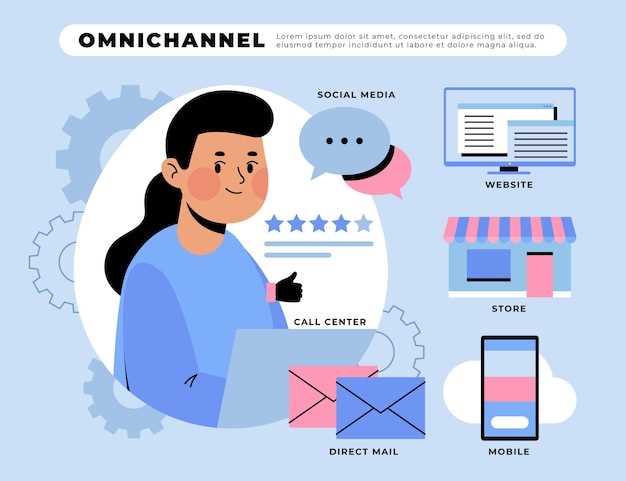
When it comes to crafting a comprehensive outlook for your organization, it’s essential to shift the focus towards the most crucial element of your operations: the individuals who keep your business running smoothly. By adopting a customer-oriented mentality throughout every aspect of your company, you can ensure long-term success and loyalty from your target audience.
Building a customer-centric mindset requires a deep understanding of your clients’ needs, preferences, and pain points. By actively listening to their feedback and adjusting your strategies accordingly, you can create a more personalized experience that resonates with your audience on a deeper level.
Implementing a client-centered approach to your organization’s strategic planning can lead to increased customer satisfaction, improved brand loyalty, and a competitive edge in today’s rapidly evolving market. By putting your clients at the forefront of your decision-making process, you can build lasting relationships and drive sustainable growth for your company.
Building a Client-Centered Approach for Your Company
In today’s competitive marketplace, it is imperative for businesses to shift their focus towards putting the needs and desires of their customers at the forefront of their operations. By adopting a customer-centric approach, companies can strengthen their relationships with clients, increase satisfaction levels, and ultimately drive long-term success.
- Understand Your Customers: Instead of making assumptions about what your customers want, take the time to truly understand their preferences, behaviors, and pain points. Conduct market research, gather feedback, and engage with your clients to gain valuable insights.
- Personalize the Customer Experience: Tailor your products or services to meet the specific needs of individual customers. Utilize data and analytics to create personalized experiences that resonate with your target audience and make them feel valued.
- Empower Your Employees: A customer-centric culture starts from within. Empower your employees to make decisions that prioritize customer satisfaction. Provide them with the necessary training, resources, and support to deliver exceptional service consistently.
- Measure and Iterate: Continuously monitor customer feedback, track key performance indicators, and evaluate the effectiveness of your customer-centric initiatives. Use this data to identify areas for improvement, adjust your strategies, and enhance the overall customer experience.
By adopting a customer-centric business strategy, your company can differentiate itself from competitors, build customer loyalty, and drive sustainable growth in an increasingly customer-centric marketplace. Embrace the shift towards prioritizing the needs and desires of your customers, and watch your business thrive.
Understanding Customer Needs and Preferences
Recognizing the desires and requirements of your clientele is essential in establishing a customer-centric approach to your company’s operations. By gaining insight into what motivates and influences your target audience, you can tailor your products and services to better meet their expectations. This in turn can lead to increased satisfaction, loyalty, and ultimately, enhanced profitability.
Addressing the diverse needs and preferences of your customers involves conducting thorough research and analysis of market trends, consumer behavior, and feedback. By actively listening and responding to customer feedback, you can identify areas for improvement and innovation that can set you apart from competitors.
Moreover, gaining a deep understanding of your customers’ preferences allows you to personalize your offerings and communication strategies, creating a more engaging and meaningful experience for your target audience. By aligning your business objectives with the needs and desires of your customers, you can build long-lasting relationships that foster loyalty and advocacy.
Implementing Customer Feedback Mechanisms

Incorporating client input techniques is essential for businesses striving to enhance their customer experience and boost satisfaction.
Utilizing Customer Insights
Obtaining and analyzing feedback from patrons can provide valuable insights into their preferences, concerns, and overall satisfaction with the company’s products or services. This data can be used to tailor offerings to better meet customer needs and expectations.
Establishing Feedback Channels
Creating various channels for clients to share their feedback, such as surveys, comment boxes, or online reviews, can encourage open communication and foster a customer-centric approach within the organization. Additionally, prompt responses to feedback demonstrate attentiveness to customer needs and a commitment to continuous improvement.
Personalizing Customer Interactions for Enhanced Engagement
When it comes to tailoring the way your company interacts with customers, personalization is key. By customizing each customer interaction, you can create a more engaging and memorable experience for your clients.
- Utilize customer data to understand individual preferences and needs.
- Segment your customer base to deliver targeted messaging that resonates with each group.
- Implement personalized recommendations and offers based on past interactions and purchase history.
- Engage with customers through various channels, such as social media, email, and in-person interactions.
By personalizing customer interactions, you can build stronger relationships with your clients and increase brand loyalty. Remember, every interaction with a customer is an opportunity to leave a lasting impression and make them feel valued and appreciated.



